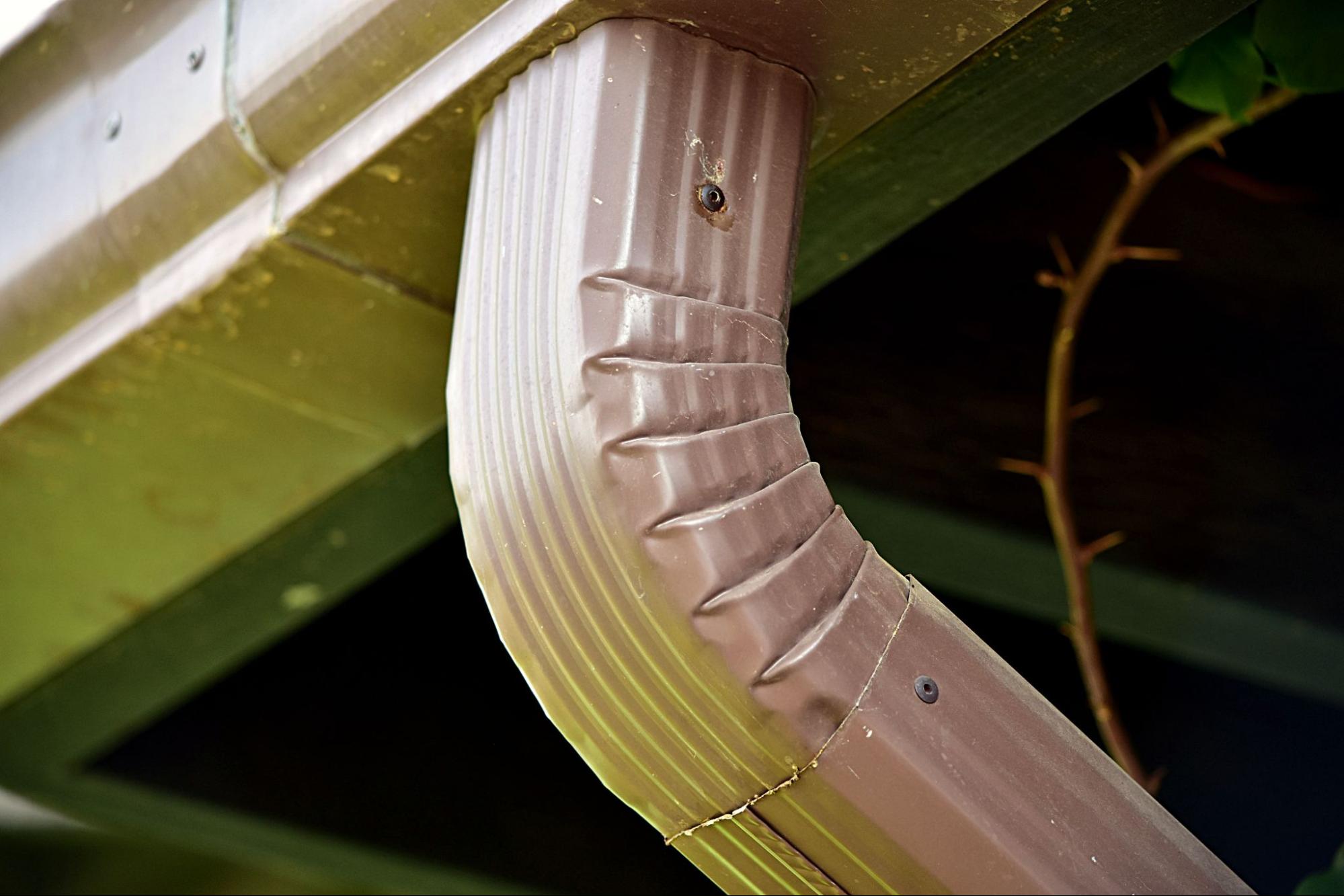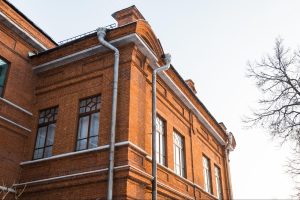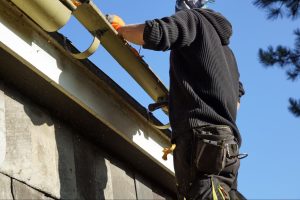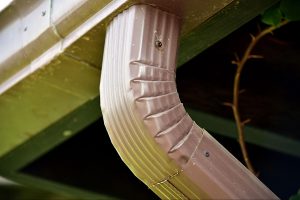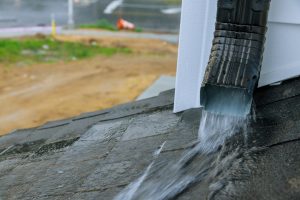Rainfall may feel natural, but unmanaged stormwater is a hidden enemy for homeowners. When water runs off the roof and pools around the house, it seeps into the soil and gradually undermines the foundation. Over the years, this silent process can cause cracks, uneven settling, and structural failure. Downspout gutters stop the damage by guiding water away from the property and protecting the home from expensive repairs.
Understanding Downspout Gutters and Their Purpose
Downspout gutters collect and redirect rainwater that falls on the roof. They connect to horizontal roof gutters and channel water away from the base of the home. Without them, uncontrolled runoff damages the soil, the siding, and the foundation itself. Every well-protected home begins with a drainage system that includes properly installed downspout gutters.
Downspout Gutters for Rainwater Management
Downspout gutters serve as the final step in a home’s drainage system. They take water that collects in roof gutters and move it away from vulnerable areas. When rainwater falls directly onto the ground near the house, it saturates the soil and pushes against the foundation walls. It creates hydrostatic pressure, which weakens the concrete and invites cracks. With downspouts in place, the flow is directed several feet away from the house. Homeowners avoid flooding, erosion, and foundation strain by controlling the water’s path.
How Downspouts Preserve Soil and Landscaping
Uncontrolled runoff can undo years of landscaping work. Water rushing off the roof strips away topsoil, drowns flowerbeds, and creates channels in the yard. Over time, this erosion leaves bare patches and ruins gardens. Downspout gutters slow the force of the rain and guide it to safer areas. They also maintain curb appeal by preserving the soil and keeping vegetation healthy. A well-kept yard supported by working downspouts adds long-term value to the property.
Downspout Gutters and Foundation Stability
A home’s foundation remains strong only when the surrounding soil stays stable. Waterlogged ground expands and contracts with changing weather, creating pressure on basement walls. This constant movement leads to cracks, leaks, and even settling. Downspout gutters solve the problem by moving water away before it has time to collect at the house’s base.
How Water Gradually Damages Concrete Foundations
Concrete appears solid, but it is porous and vulnerable to moisture. When rainwater pools near the foundation, it seeps into tiny pores and crevices. During colder months, water inside these gaps freezes and expands, causing cracks to widen. In warmer seasons, constant saturation weakens the surrounding soil, leaving the foundation without proper support. These changes often result in uneven settling or basement flooding. Properly installed downspout gutters break this cycle by directing water far enough away to relieve pressure.
Early Warning Signs of Foundation Trouble
Homeowners often overlook the subtle signs of foundation stress. Cracks in walls or basement floors, doors no longer close smoothly, and windows with uneven gaps are common clues. Damp smells in the basement or visible mold growth indicate moisture seeping in. Over time, even small shifts cause misalignment in the structure above. These problems often start with poor water drainage or missing downspout gutters. Property owners can avoid costly repairs by spotting these signs early and installing a proper system.
Common Home Problems Without Downspout Gutters
Homes without downspout gutters rarely escape the effects of unmanaged water. Rain finds its way into soil, walls, basements, and siding, creating more severe damage with each storm. Repairs become more expensive as these problems accumulate over the years. Gutter installation is a far smaller investment compared to the cost of fixing multiple areas of the property.
Soil Erosion and Damage to Outdoor Spaces
Runoff that pours directly off the roof is destructive to soil stability. It strips nutrients, uproots grass, and carves ruts through yards. Driveways, patios, and walkways begin shifting when the ground beneath them is washed away. Property owners often spend thousands on landscaping repair because of erosion caused by missing gutters. Downspout systems prevent this by dispersing water safely. Protecting soil and outdoor features, they help homeowners preserve both function and beauty in their yards.
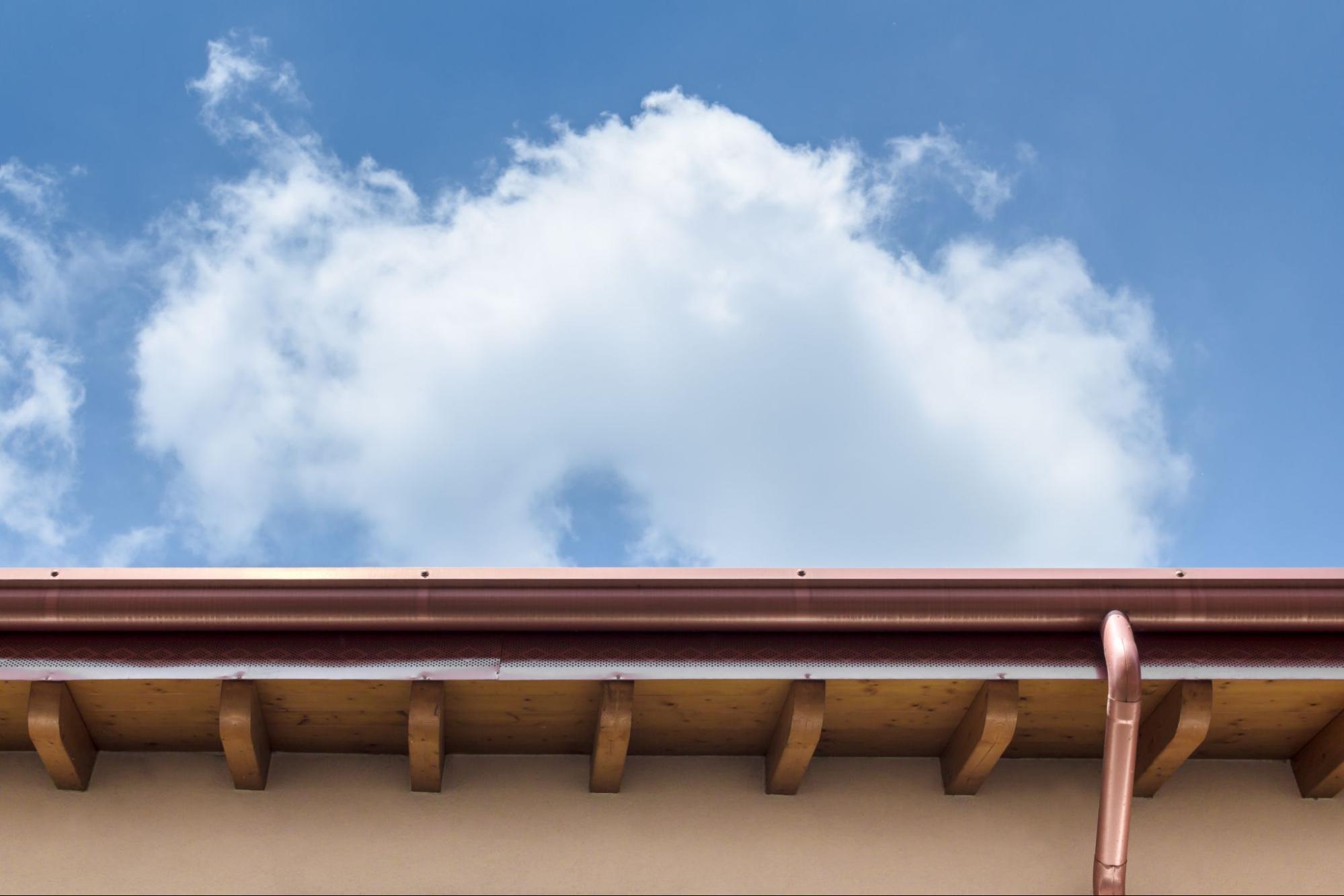
Basement Flooding and Growth of Mold
Water begins pushing into the basement walls when the soil around the foundation becomes saturated. That often results in visible flooding during heavy storms. Even without major flooding, the constant dampness creates the perfect environment for mold. Mold damages stored belongings and releases spores that affect indoor air quality. As a result, families may face respiratory problems or allergies. Downspout gutters prevent these conditions by keeping basements dry and livable year-round.
Damage to Exterior Walls and Siding
Without downspouts, walls are constantly exposed to cascading water. Wooden trim rots, paint peels, and siding materials weaken under repeated contact. Water streaks stain the exterior, while splashing mud leaves unsightly marks. Insects and pests also take advantage of softened materials, causing further damage. Downspouts redirect water away, keeping exterior surfaces cleaner and more durable. In this way, they protect the home’s structure and appearance.
Choosing the Best Downspout Gutters for Your Home
Not all downspout systems work equally well for every house. Choosing the right type depends on roof size, rainfall levels, and the homeowner’s budget. Materials, placement, and additional features all influence performance. A well-designed gutter system tailored to the property offers the most reliable protection.
Comparing Materials and Their Durability
Aluminum gutters remain popular because they are lightweight, affordable, and rust-resistant. Vinyl is cheaper but becomes brittle in extreme weather and cracks easily. Steel is stronger and handles heavy impact, but requires coatings to prevent corrosion. Copper is the most durable and attractive option, with lifespans reaching several decades. The trade-off is the high upfront cost that not all homeowners are ready for. Each material has strengths and weaknesses, so homeowners should choose based on climate, budget, and maintenance preferences.
Proper Placement and Sizing for Protection
Even high-quality gutters fail if they are incorrectly placed. Downspouts must be installed at intervals that match the size of the roof. Larger homes often require multiple downspouts to spread the water load evenly. The slope of the gutters is also critical, allowing water to flow smoothly into each downspout. Professional gutter installers calculate capacity based on regional rainfall averages to avoid overflow. Correct placement ensures that every storm is managed without water pooling near the house.
Added Features That Increase Efficiency
Downspout gutters work even better when paired with minor upgrades. Extensions carry water farther into the yard, away from the foundation. Splash blocks disperse the flow to prevent erosion where water exits. Underground drains move water invisibly into storm sewers or safe drainage areas. Gutter guards keep leaves and debris from clogging the system, reducing the need for frequent cleaning. Together, these features increase efficiency and reduce the likelihood of costly failures.
Maintaining Downspout Gutters to Avoid Failures
Gutter systems only work as long as they remain clean and functional. Debris, leaks, and sagging sections disrupt water flow and lead to damage. A consistent maintenance routine keeps them working effectively during every storm. With proper care, downspout gutters protect a home for many years without replacement.
Seasonal Cleaning and Regular Inspections
Leaves, twigs, and dirt collect inside gutters throughout the year. If left unchecked, these blockages force water to spill over the sides. Seasonal gutter cleaning in spring and fall removes buildup and prepares the system for heavy rains. Inspections should check brackets, seams, and downspouts for clogs or leaks. Homeowners who follow this schedule reduce the risk of water pooling near their foundation. Over time, routine upkeep saves both money and property value.
Spotting Leaks and Fixing Loose Connections
Small leaks often go unnoticed until larger problems appear. Water dripping from joints or seams can pool at the house’s base. Loose sections sag, creating areas where water stagnates instead of draining. Testing with a garden hose quickly reveals leaks and weak spots. Sealing joints or tightening brackets usually restores proper function. Addressing these minor problems early prevents larger foundation risks later.
When to Call for Professional Service
Not all maintenance tasks are safe or easy for homeowners. Tall roofs and complex gutter systems often require professional tools and expertise. Contractors not only clean but also spot problems invisible to the average eye. They ensure correct slope, secure brackets, and long-lasting repairs. Professional service is especially valuable before storm season when gutters face the heaviest demand. Investing in expert inspections provides security and avoids costly emergencies.
The Cost of Downspout Gutters Compared to Repairs
Homeowners often weigh the price of installation against potential savings. Gutter systems require an upfront cost, but repairs from water damage are far higher. Foundation work, landscaping fixes, and mold removal add up quickly. Installing gutters is an investment that pays for itself many times over.
Typical Installation Costs Explained
The installation cost depends on material choice, roof size, and labor. Vinyl is the least expensive option, but it has the shortest lifespan. Aluminum costs more but offers durability in many climates. Steel and copper are priced higher but last longer, with copper often exceeding 50 years. Homeowners should balance immediate budget with long-term performance. Choosing the right system up front reduces replacement and repair costs in the future.
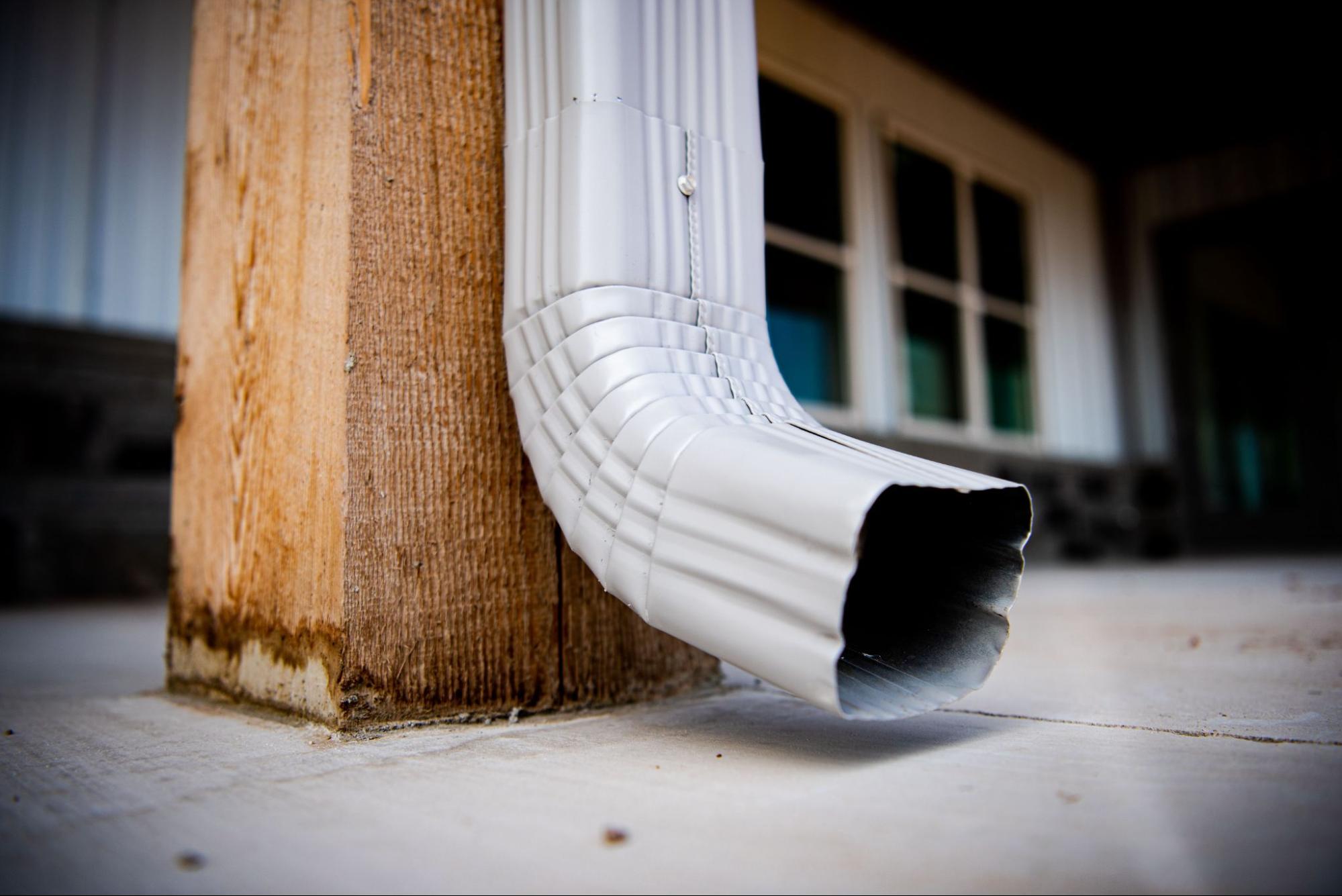
Maintenance Expenses Over Time
Keeping gutters in good shape adds small yearly expenses. Professional cleaning averages less than the cost of most home repairs. DIY cleaning lowers expenses further but carries safety risks for tall homes. Minor repairs, such as sealing leaks or replacing short sections, are manageable for most budgets. Neglecting maintenance, however, multiplies costs quickly when damage spreads to the foundation. Routine attention is always the more affordable choice.
Long-Term Savings on Foundation Repairs
Foundation repairs often cost tens of thousands of dollars, and mold remediation and yard restoration increase the total even further. By comparison, gutter systems are a fraction of the price. They stop water damage before it begins, saving homeowners from financial stress. Long-term, the savings make gutters one of the smartest property investments. Preventing disasters is always less costly than repairing them afterward.
Why Downspout Gutters Are a Worthwhile Investment
Beyond saving money, gutters improve daily living conditions and property value. They protect the structure, the yard, and the home’s comfort. Potential buyers see gutters as proof that the property has been cared for. For current owners, they provide peace of mind during every storm.
Protecting Property Value Through Proper Drainage
Real estate markets reward well-maintained homes. Gutters prevent visible damage to siding, lawns, and driveways, making properties more attractive to buyers. They also signal that the foundation is likely in better condition. This reassurance raises confidence during sales negotiations. Value still matters for owners not selling, since maintenance directly affects long-term equity. Downspout gutters act as both protection and an asset.
Extending the Lifespan of Homes and Materials
When left unmanaged, rain and runoff shorten the life of concrete, wood, and siding. Downspout gutters shield these materials by keeping them dry. This protection means fewer replacements, fewer repairs, and more years of safe use. Over decades, a home with good drainage remains structurally sound. Owners benefit from lower maintenance bills and more comfortable living. A longer lifespan for the property itself is the ultimate return on investment.
Protect Your Foundation With Downspout Gutters
Rainwater will never stop testing the strength of your home, but you control how it impacts your property. Downspout gutters stand between steady protection and costly repairs. Installing them is not just maintenance but a decision that preserves comfort, stability, and financial peace. Acting now ensures your foundation remains strong long after the storms pass.
Learn more from the Quality Rain Gutters, Inc. blog, where we share proven solutions and advice tailored to safeguard your home year-round.
